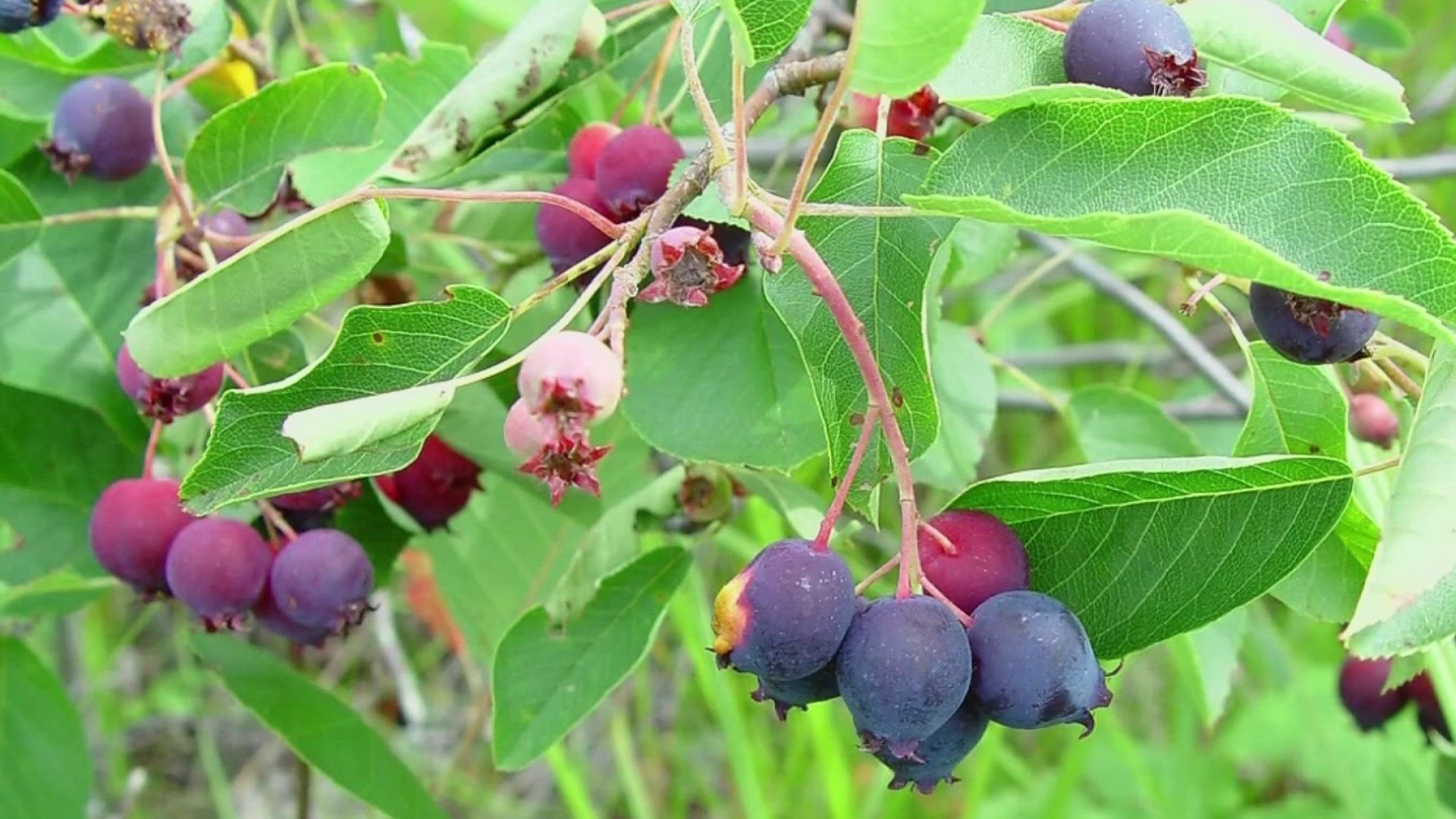BOISE, Idaho — Gardening is all about balance. Whether you grow a lot of flowers, or you grow all vegetables and fruit, try combining both for an edible landscape.
On this edition of You Can Grow It, KTVB Garden Master Jim Duthie shows some examples of plants that you can add to your home landscape that will provide edible benefits for yourself, and for wildlife, as well as some others that will provide stand-out beauty in the midst of your vegetable garden.
There are a few varieties of berry plants that will grow very well in both urban and rural landscapes. Most of them provide an attractive display of color from spring to fall, with the added benefit of a crop of healthy, delicious berries for you and the birds.
Aronia
First, the aronia – or chokeberry – is a deciduous ornamental shrub that produces pretty pink or white blossoms in the spring, followed by dark red, purple or black berries in the summer. In the fall, aronias grow colorful leaves.
Birds don't care that much for these berries, leaving more for you to make into jams and jellies, syrups, juices, and many other flavorful products.
Serviceberry
The serviceberry is native to Idaho and can be grown either as a shrub or a small tree. It thrives throughout all four seasons:
- Spring: It is one of the earliest sources of nectar for pollinators, with abundant white blossoms that resemble apple blossoms.
- Summer: You will get clusters of delicious reddish-purple berries that make a good substitute for blueberries.
- Fall/winter: In the cooler nights of fall, the leaves turn bright orange and red, revealing a silvery bark in winter.
Berries offer some great health benefits, but many gardeners shy away from blackberries because of their tendency to spread quickly with dense, thorny, tangled growth. However, there are several upright varieties without thorns that make growing and harvesting the berries easy and rewarding.
The plants need minimal care and by late summer, you can harvest the berries without getting even a scratch.
Rhubarb
If berries aren't your thing, try another Idaho favorite – rhubarb. It's a perennial vegetable, but it used mostly as a fruit in desserts and jams. Rhubarb makes an attractive shrub in the yard or vegetable garden, and is one of the first food crops harvested in mid-to-late spring.
Give rhubarb a little space though, since it produces very large leaves, with eye-catching pink and red stems. The leaves are toxic, but the reddish stems are delicious. Once it comes up in the spring, it won't require much care, and since it tastes great with strawberries, you might want to plant a strawberry patch nearby.
Non-edible options:
Now, here are a few non-edible plants that you might include in your vegetable garden for an interesting shake-up in the sea of green leaves. They will attract a lot of pollinators to make your vegetable garden more productive.
Agastache
Agastache is better known as hyssop or hummingbird mint. It's a perennial with oval, tooth-spaced leaves that have a white tint underneath, and bright lavender flowers that bloom throughout the summer. It's drought tolerant and hummingbirds and butterflies love it.
Echinacea
Echinacea, or coneflowers, are part of the daisy family, which also includes sunflowers. They have large showy heads of flowers that bloom from early to late summer in a show-stopping display of color. They do well in our hot, dry summers, and will really bring the bees to pollinate your garden.
Oakleaf hydrangea
The oakleaf hydrangea is also well-suited to Idaho's summers and cold winters, unlike some of its cousins. It comes in a dwarf variety, so it can grow at the edge of your vegetable garden.
You will get dramatic pink or white blossoms in the summer, and the leaves turn a brilliant red, orange, yellow and burgundy in the fall.
It’s possible to have a beautifully landscaped yard, as well as a bountiful harvest of delicious things to eat. It just takes a little planning, and You Can Grow It.
One final idea you might want to consider – planting herbs in the bare spaces along the edge of your yard or along fences and walls. They will make those areas more attractive, as well as provide a source of delicious and healthy additions to your favorite recipes.
Watch more You Can Grow It:
See them all in our YouTube playlist here:

